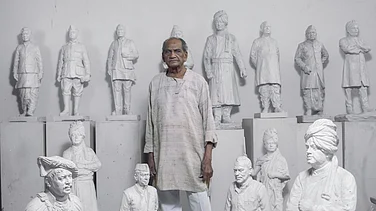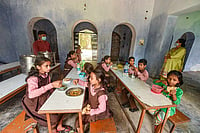
Supreme Court to examine plea for creamy layer–style economic criteria within SC/ST reservations.
Petition argues current policy benefits affluent SC/ST groups, leaving poorer members behind.
Next hearing scheduled for October 10 to discuss the proposal further.
The Supreme Court has issued a notice to the Union government on a petition seeking to introduce a system similar to the creamy layer concept applied to Other Backward Classes (OBC) reservations, aimed at ensuring equitable distribution of reservation benefits within Scheduled Castes and Scheduled Tribes (SC/ST), reported The Hindu.
A Bench of Justices Surya Kant and Joymalya Bagchi took cognisance of the petition filed by Ramashankar Prajapati, who submitted that the existing reservation policy disproportionately favours groups within SC/ST communities who are already relatively well-off and socially influential, while those facing extreme poverty continue to be left behind.
"There is an urgent need to integrate economic criteria into the reservation policy,” Mr. Prajapati told the court, represented by advocates Sandeep Singh and Reena N. Singh. The petition calls for a two-tier reservation system within SC/ST categories, prioritising economically weaker individuals before extending benefits to those better placed.
The petitioner clarified that the proposal “does not involve any reduction in the current percentage of reservation for SC/ST or other minority communities… This reform proposal does not seek to abolish or undermine caste-based reservations but rather to refine them to serve their intended purpose more effectively by introducing an income-based prioritisation mechanism within SC/ST reservations,” Mr. Singh argued.
During the hearing, Justice Kant remarked that the concept depends on the state’s capacity to assess economic status within these communities. The Bench scheduled the next hearing for October 10, noting the sensitivity of reservation policy and the possibility of varied opinions on the matter.
According to The Hindu, the petition referenced a majority judgment of a seven-judge Constitution Bench in State of Punjab versus Davinder Singh, which called for a distinct set of criteria to identify and exclude the creamy layer among SC/ST beneficiaries. Justice B.R. Gavai, a member of that Bench, had held in August 2024, “The State must evolve a policy for identifying the creamy layer even from the Scheduled Castes and Scheduled Tribes so as to exclude them from the benefit of affirmative action... the criteria for exclusion of the creamy layer from SC/ST for the purpose of affirmative action could be different from the criteria as applicable to the Other Backward Classes (OBCs).”
Justice Gavai, whose opinion underpins the current plea, observed that excluding the affluent from quota benefits is essential for achieving real equality.
Mr. Prajapati also argued that under the Constitution, caste distinctions exist only to implement reservation, and any benefits should be determined by “economic or financial factors, status of living, vocation and the facilities available to each one of them based upon their place of living (urban or rural).”
The petition pointed out that a small but influential section of SC/ST families has used reservation benefits to access high-ranking government positions, financial stability, and quality education, resulting in “intra-community economic stratification.”
“The relatively affluent continue to benefit from reservations at the expense of those who remain in financial distress,” the petition submitted.
While political reservations have increased SC/ST representation in legislatures, economic and educational gains remain concentrated among privileged groups. “The political empowerment of SC/ST leaders has not necessarily translated into widespread socio-economic development for the entire community,” it added.
The Hindu reported that the Supreme Court’s decision to examine this plea signals a possible re-examination of reservation policies to better target the most deprived within SC/ST communities.




























